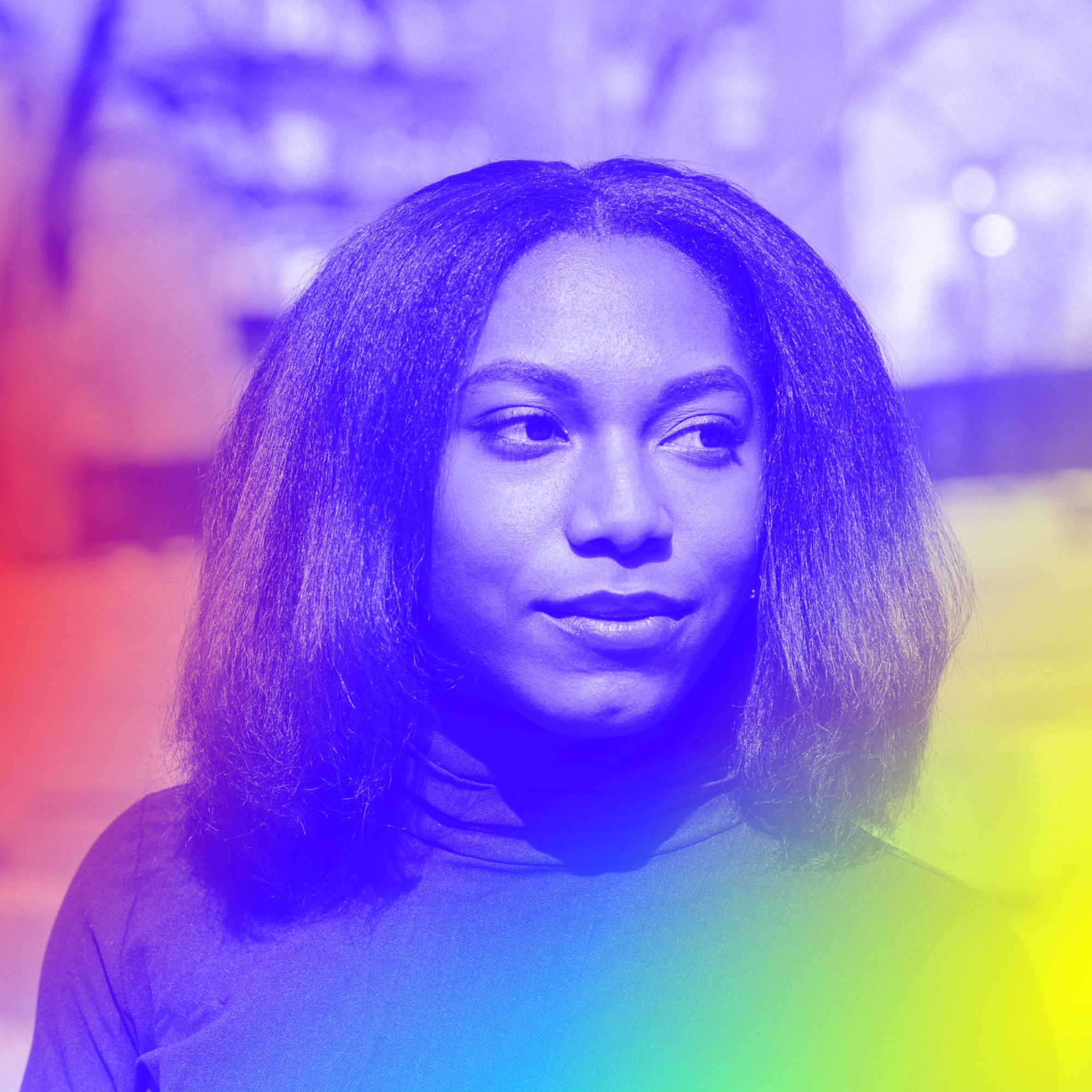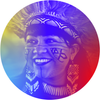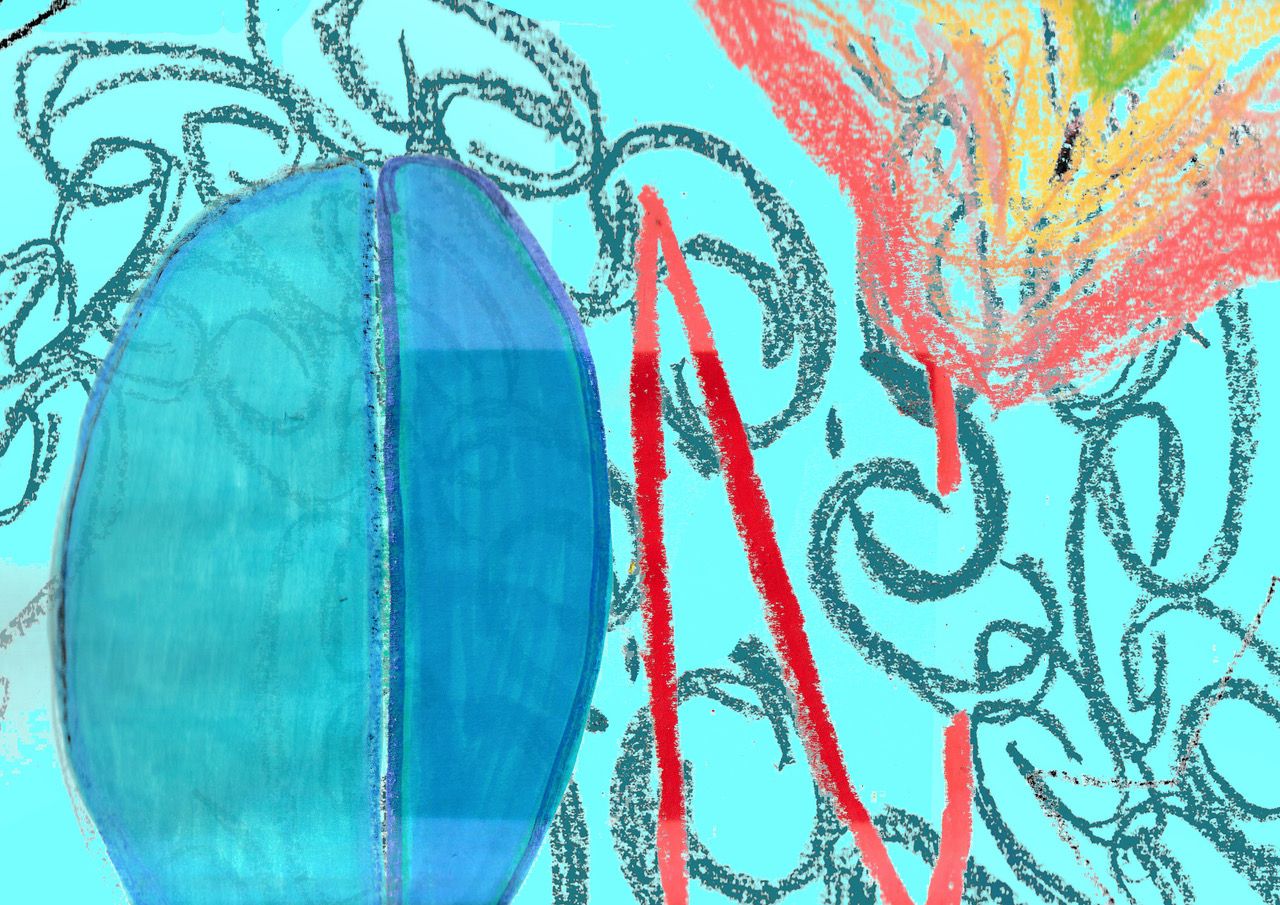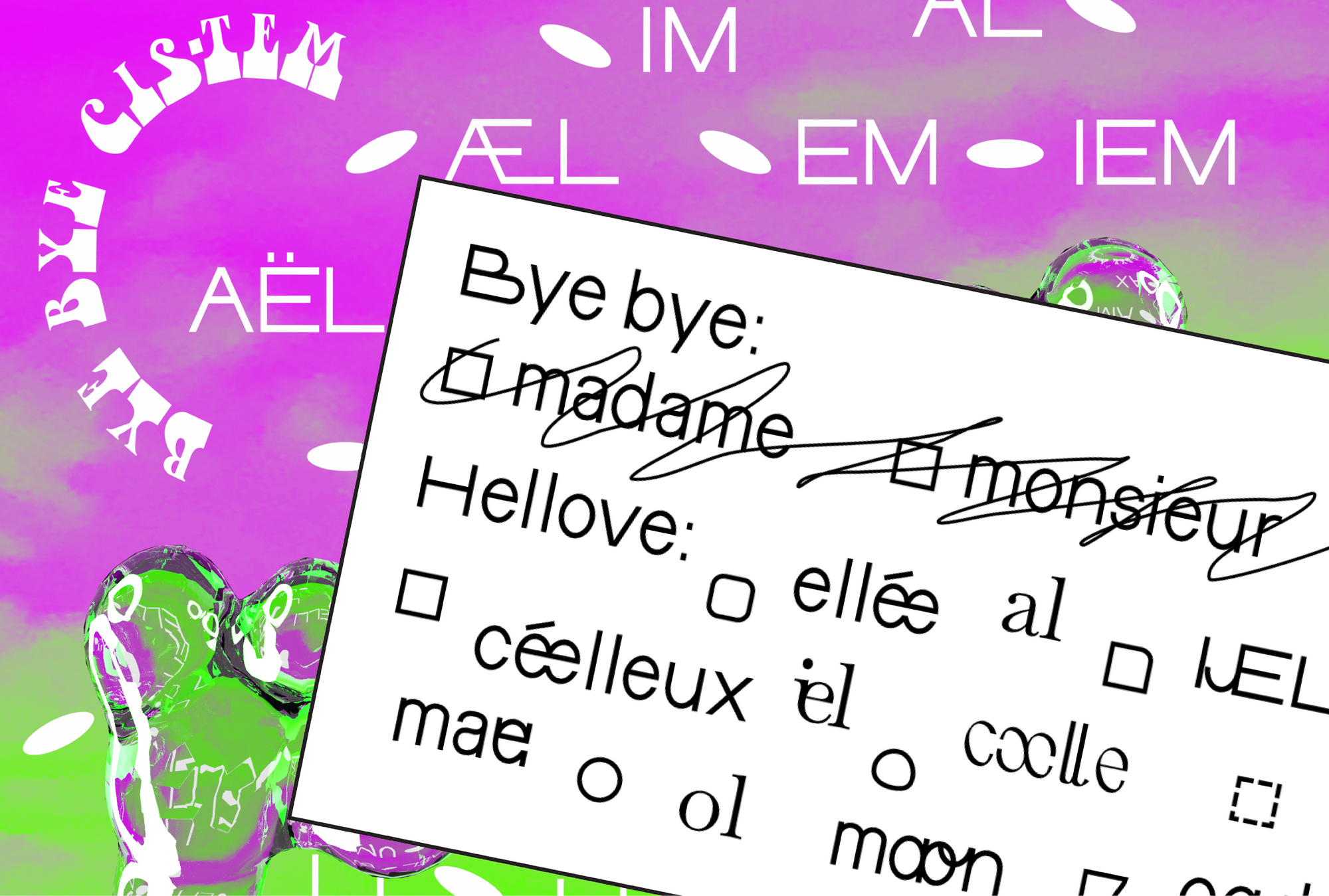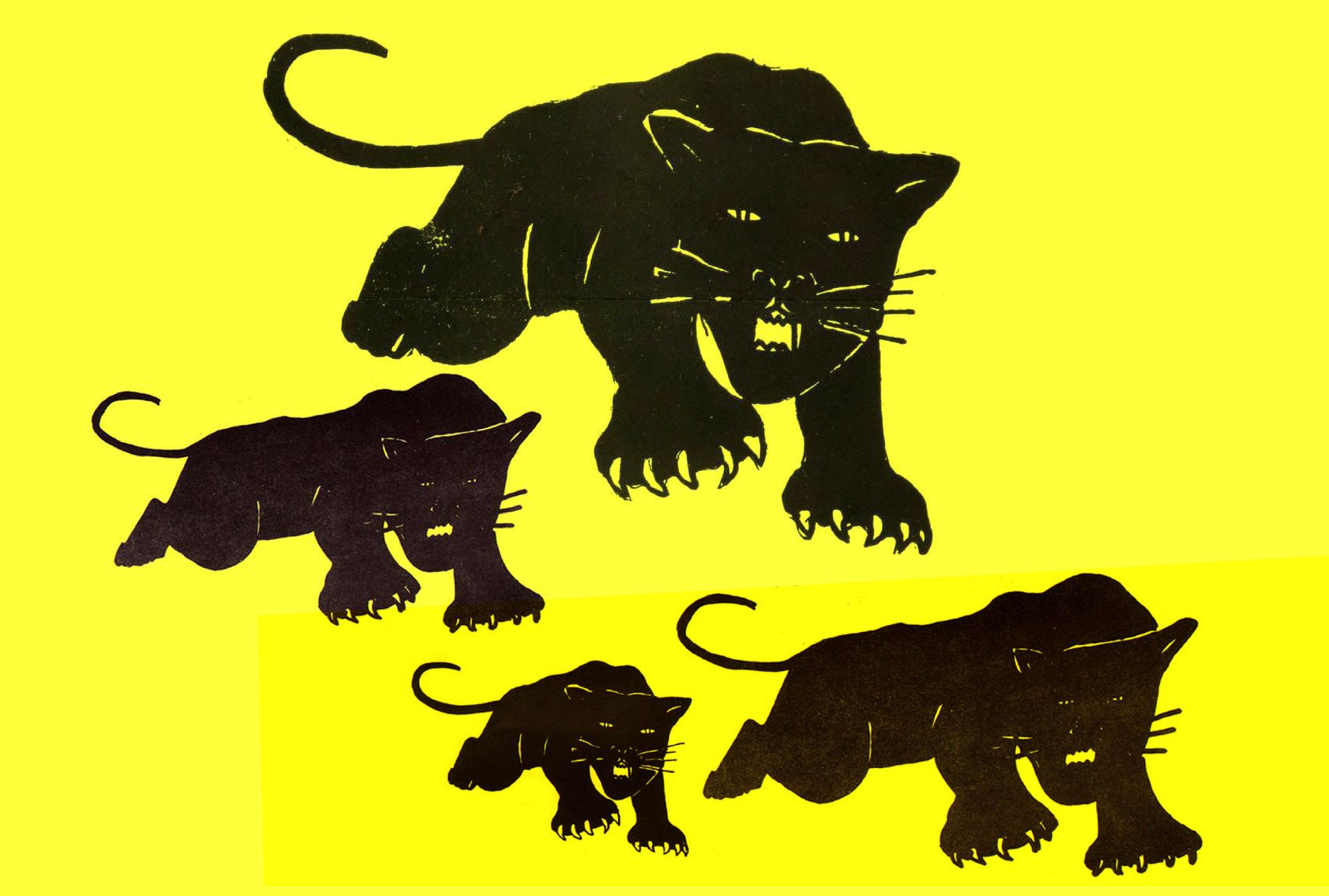
Dark, sleek, and sneakily majestic, the black panther lunges forward, skeptical but without fear. Known for its ability to move through the jungle alone and completely unseen, it observes its prey with emerald green eyes and adapts effortlessly to a range of environments.
In the 1960s, this powerful member of the animal kingdom would figure prominently in the logo for the Lowndes County Freedom Organization (LCFO), an independent American political party established in 1965 in Lowndes County, Alabama by a cohort of local African-American citizens and staff members of the Student Nonviolent Coordinating Committee (SNCC). Given this heritage, the LCFO acted as an affiliate organization of SNCC, a committee formed to coordinate demonstrations in reaction to the segregation and political exclusion of Black Americans, to register and mobilize Black voters, and to ultimately give the younger Black generation a more substantial voice in the civil rights movement. SNCC had field offices across the American South (Atlanta, Georgia was the site of the committee’s national office); later, when these Southern organizations and Huey P. Newton’s Black Panther Party (BPP) in Oakland, California attempted to join forces and form a united front, this logo became a bonafide political symbol for Black liberation.
Though these organizations are largely known by the men who led them, this logo—one that would go on to define an entire movement, and become globally recognized and repurposed as a symbol of power and liberation up through today—was designed collaboratively by women.
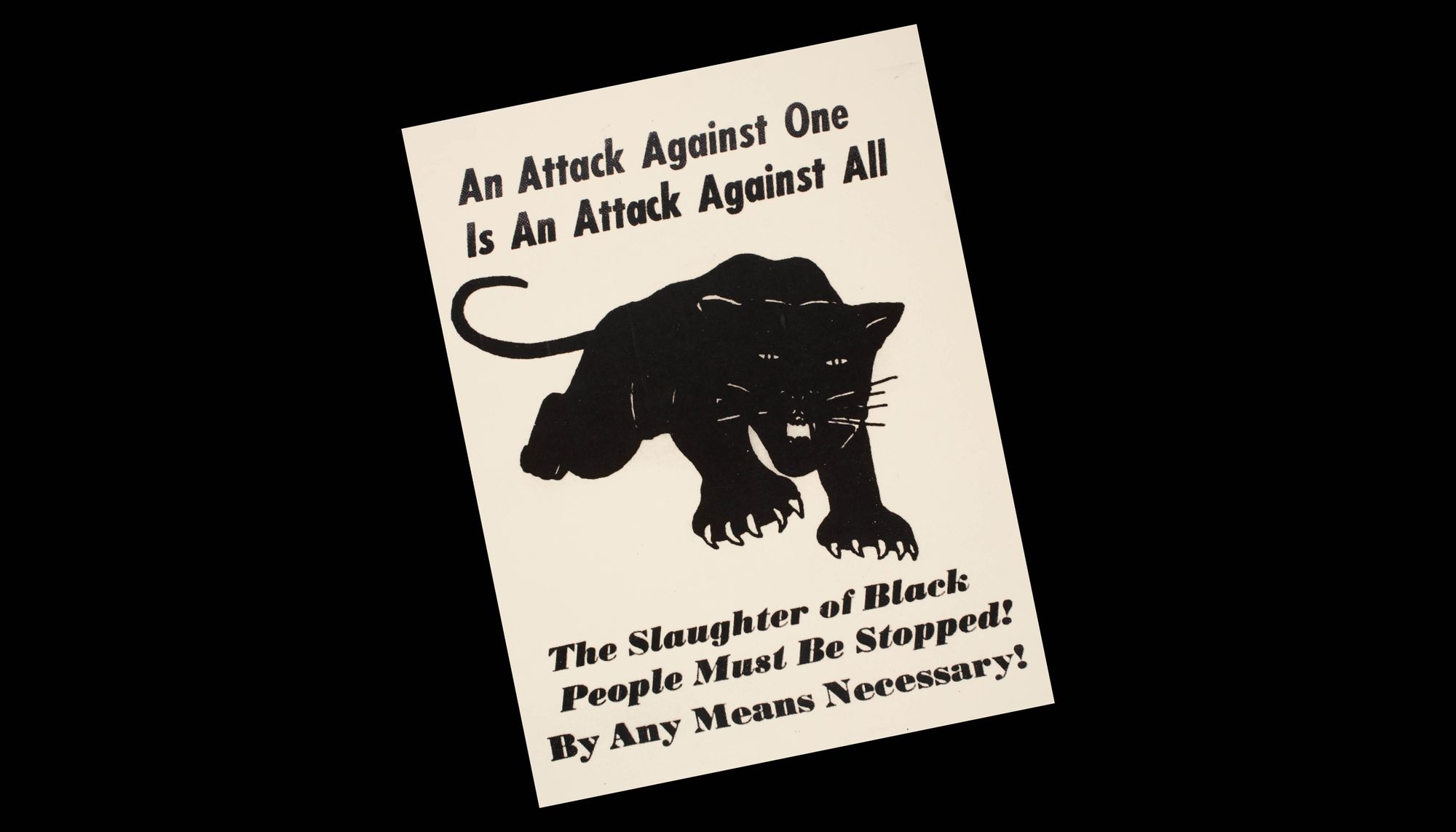
At the time, volunteers for the SNCC worked in flexible roles: one day could be spent out campaigning in the field dodging omnipresent danger, another spent answering calls, printing pamphlets, hosting events, and combining organizing efforts in the office. Creating this logo was one of the few art assignments that members of the SNCC would be asked to work on, and it got outsourced to women perhaps without much thought. Graphic design wasn’t necessarily the focus of a political party advocating for equality, but it became a key component in tracing how this ideology spread across the country with great success.
“The thing about graphic art and political art in general is that there’s so much cross pollination,” says Lisbet Tellefsen, a scholar of movement graphics and collector of Black Panther ephemera. “The women who did that work back in the day...they’re in general names that most people would not know.”
“Graphic design wasn’t necessarily the focus of a political party advocating for equality, but it became a key component in tracing how this ideology spread across the country with great success.”
The logo was first dreamt up as a way to give the LCFO political party a visual identity; other local parties, like the Southern Democrats, were known for using a symbol to represent themselves on ballots. Illiteracy rates were high, and images gave people a useful, memorable shorthand for otherwise word-heavy materials.
Lowndes County is a rural area in the American South, located between Selma and Montgomery, Alabama, both hot spots in the fight for justice. This “Black belt of Alabama,” known for its fertile soil and prominent agriculture, had a deep history of slavery. Violence shaped the landscape, no doubt perpetuated by the town’s dominant political party at the time, the Southern Democrats (also known as “Dixiecrats”), whose campaign materials brandished a white rooster. This was a party of states rightists, with white supremacist ideals eerily similar to the ones that have bubbled up like bile in American society over the last four years. “White supremacy for the right” was written around the party’s logo, a forefather to the present-day red MAGA hat.
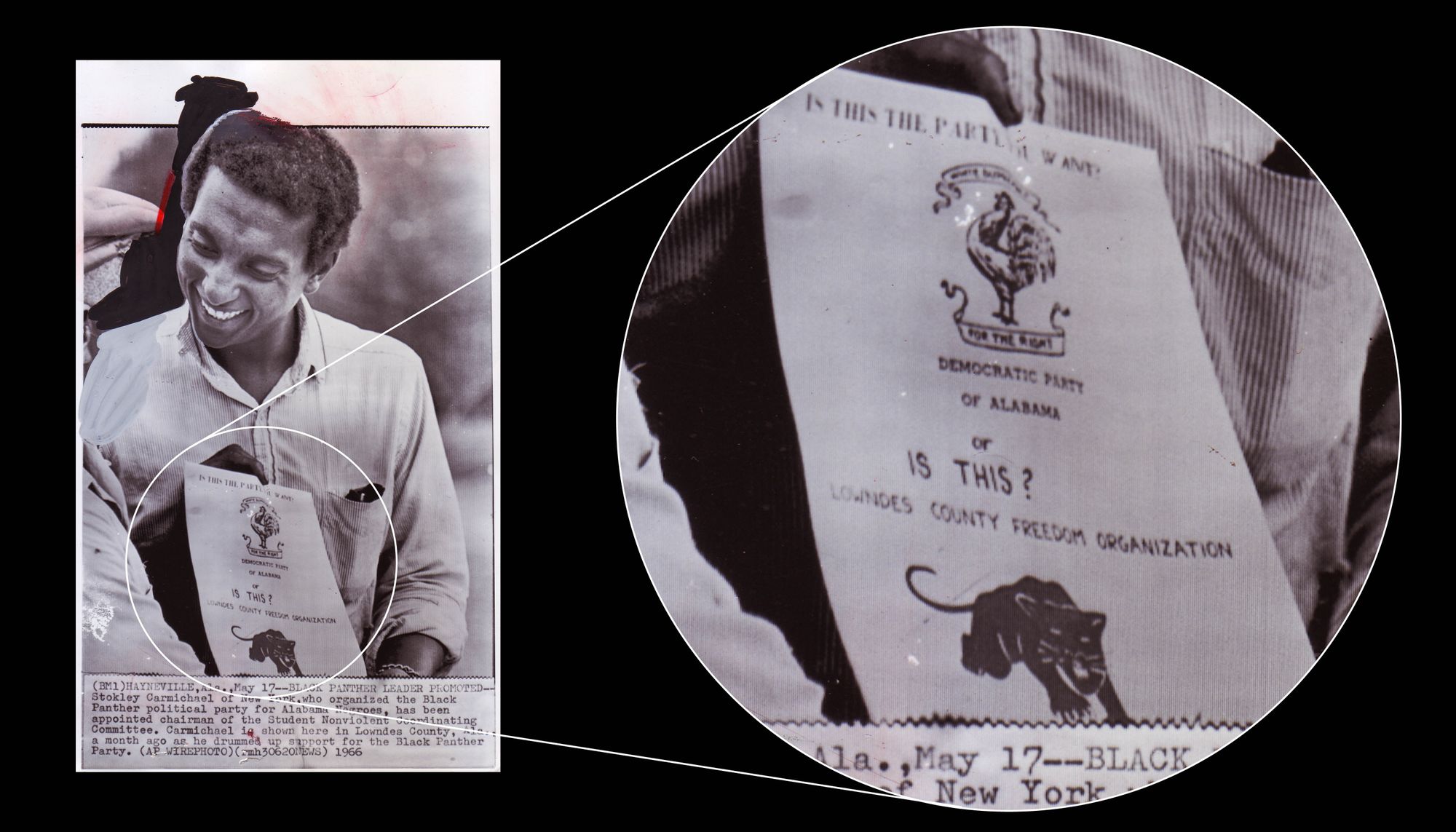
According to Jennifer Lawson, who first participated in a civil rights demonstration at age 15 during the 1963 Children’s March in Birmingham, Alabama, a man named Jack Minnis, the director of research for the SNCC in Atlanta, lit the match that would motivate the organization to move beyond grassroots voter registration work and become a bonafide political party.
“In doing research, he had discovered that in Alabama, one could have a political party without being affiliated with a national political party—you could have an independent party and run candidates,” Lawson remembers. “The people there created the Lowndes County Freedom Organization, that was their political organization. And then they decided to create the Lowndes County Freedom Party, which became their political party to run candidates.”
“The question that came up was ‘Well, what would they have as their symbol?’ And I recall that John Hulett [a local organizer and activist] then said: ‘What we need is a mean black cat to run that white rooster out of this county.’”
This allowed the organizers working within LCFO to not only register people to vote as members of the organization’s new independent political party, but also select a slate of candidates to represent their interests. The Southern Democrats and their white supremacist rhetoric had long been established, so designing a successful logo for the Freedom Party was a necessary step in carving out space in the county.
“The question that came up was ‘Well, what would they have as their symbol?’ And I recall that John Hulett [a local organizer and activist] then said: ‘What we need is a mean black cat to run that white rooster out of this county,’” Lawson says. It was then, Lawson remembers, the SNCC office in Atlanta sent a sketch of a black panther via snail mail to the LCFO team in Alabama. “The person who I recall was Ruth Howard Chambers [fellow SNCC member] who found that image.”
To be clear, the SNCC was a distinct effort from the Freedom Organization, though they were of course intimately connected. So while SNCC never officially adopted the black panther as its symbol, the beauty of the logo is that it ultimately represented liberation as a shared goal, beyond the specificity of a single political party in 1960s Alabama.
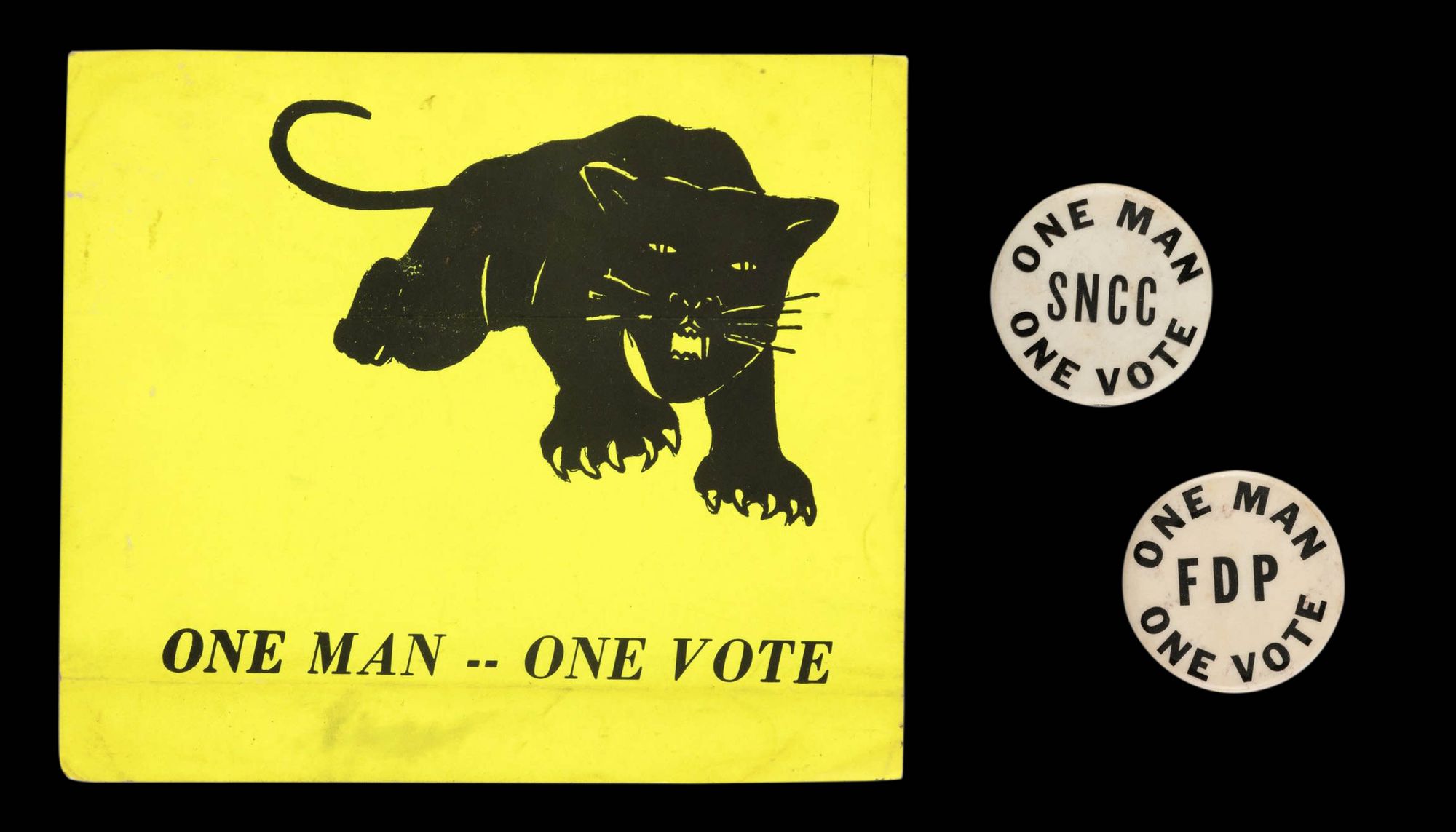
“I think in Lowndes County it was a really effective counterpoint to the white cock [of the Southern Democrats],” says Tellefsen. “I don’t know that Black power was something that was really being articulated at that moment but once it migrated, the image of the black panther and Black power were already fused. So it became a very powerful icon for that phrase, for that idea. You could see a picture of a black panther and immediately feel Black power and Black pride.”
“The visual legibility of the logo helped brand the movement; through graphic design, the Party was able to establish an identity.”
What could once be read simply as a large and mysterious cat was effortlessly collapsed into a symbol for Black power writ large, beyond just the localized politics of the SNCC in Lowndes County. This not only gave the logo shareability, but staying power too. The visual legibility of the logo helped brand the movement; through graphic design, the Party was able to establish an identity.
“You know, it’s kind of like embedded in our psyches. You can look at a drawing or a poster and without reading the words you can get so much of what it’s saying,” says Tellefsen. “There’s a way that images get ingested almost whether you like it or not. There’s something about words that require your permission, you need to actually read them and you need to actually make the next step to actually process what it is they’re trying to say—that’s an investment that you are participating in. Images go in whether you like them or not. And there’s power in that.”
Upon joining the Lowndes County SNCC in the late 1960s, East Coast-expatriot Dorothy Zellner remembers Stokely Carmichael, chairman of SNCC starting in 1966 succeeding the late John Lewis, handing her a piece of paper with a crude drawing of a panther on it. It would later be discovered that this original sketch—the same one that was sent via snail mail to Alabama—was done by Atlanta-based SNCC member Ruth Howard Chambers, and was based on the nearby Clark College football mascot. Zellner and Carmichael knew each other as classmates at the Bronx High School of Science in New York City (which had a strong art program), but when they reunited in 1966 organizing in Atlanta, Carmichael—“a character”—according to Zellner, had aspirations to start a Black independent party.
“The design of the logo wasn’t a conscious collaboration between women, but instead was birthed through an accidental game of artistic telephone.”
At that point, Zellner remembers Carmichael casually approached her in the buzzing field office and asked “Can you draw a panther?” To which she responded: No. “Next thing I knew he came to me with a drawing of a panther; it was a line drawing and he asked me to do something with it because it was a little bit raggedy,” Zellner said. “I only found out many decades later that the drawing that he gave me was probably what Ruth Howard Chambers had worked on. And that she had based her drawing on the mascot at one of the Black colleges in Atlanta.” In this sense, the design of the logo wasn’t a conscious collaboration between women, but instead was birthed through an accidental game of artistic telephone.
“It’s remarkable that women, all Black women except for Zellner, joined forces to create a logo that would change the course of history—whether credit was freely given or not.”
The 20th century women’s movement, sometimes referred to as feminism’s second wave, was just slowly starting to gain momentum around the country, but it would be several years before polarizing topics like whether a woman should take her husband’s last name or not would become archaic. The women who designed the logo were existing in a sexist society, one that we still see vestiges of today. At the time, however, Zellner says: “I was not conscious of myself as a woman operating on anything as a woman. I would say that most women didn’t operate in a collective as women, but my consciousness as a woman was extremely low. I was a SNCC worker, that was my consciousness. I was a human being, a white woman, who was lucky enough to work in the Black liberation movement. And I did almost everything I was asked to do.” Given this context, it’s remarkable that women, all Black women except for Zellner, joined forces to create a logo that would change the course of history—whether credit was freely given or not.
Zellner quickly got to work, tidying up the cat’s whiskers and inking the figure in, though she had no sense of what this inked drawing would be used for. A couple nights later while watching the news, she saw the panther she had worked on dance across the screen. “I was shocked!” Zellner said, adding: “This later became quite ironic because the very next year all the white people left SNCC. And I was in this very unusual circumstance of having worked on the panther. And I’m a white woman. I’ve always thought of this as an irony of fate.”
Over the next couple years, this logo would be used for all different types of applications, predominantly on literature handed out by the Party, but in many other ways too. “Generally you always saw posters, you saw pins, they had sweatshirts, flags that would be used for demonstrations. I have a matchbook that they did for their newspaper,” says Tellefsen. In order to cut costs associated with outsourcing to professional printers, SNCC had a significant printing operation, and used their own press to print off pamphlets and newsletters.
After dropping out of college at Tuskegee University to join the movement (having been radicalized by the murder of a classmate at the hands of police, among other injustices), Jennifer Lawson, a young and dedicated activist, began working with SNCC and ultimately moved to Lowndes County to work out of the office there. “I was doing the registration work. But also I drew as a hobby. I never studied art formally or anything, but I drew for fun.”
Lawson’s design work, much like Zellner’s, was the result of a willingness to be of service in any way the party needed. This nurturing instinct, which has long been coded as distinctly feminine, could have been abused. But fortunately, SNCC had built a culture of collaboration and mutual aid that made everyone involved willing to step up and explore new ways to contribute to the cause. Lawson first volunteered to work in an artistic capacity when the organization expressed a need to put the panther image (using Chamber’s original sketch and the later elaboration on it) as a symbol on ballots for local offices, and on flyers for community meetings.
During her tenure in SNCC, Lawson also contributed other types of material, which operated both as advertisement and activism. Securing voting rights for Black people in the community was the organization’s central agenda, especially early on. “By 1964-65, even though there were thousands of Black people eligible to vote in Lowndes County, there were only four registered voters,” Lawson says. As a get-out-the-vote effort, Lawson designed posters and billboards mobilizing Black members of the community to get registered.
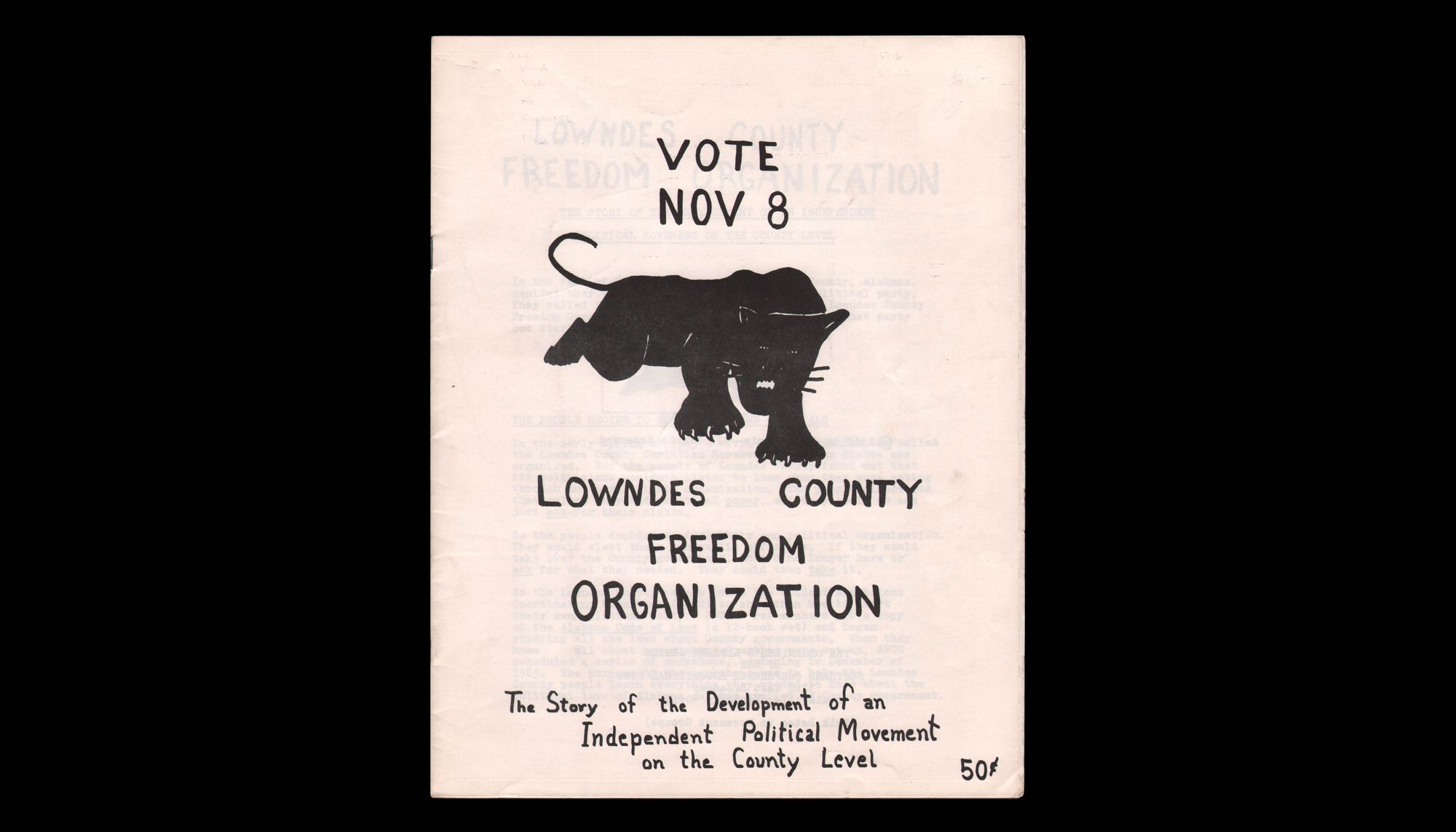
“There were some places where Black people in Lowndes County owned their own land. And they were quite courageous and allowed the land to be used for these billboards,” she says. The black panther Lawson used in her prints was “appropriated” from the original image that had come from Atlanta, known for its “particular pouncing look.” In addition, Lawson drew a series of comic books, which were used to educate the Black community about various positions they could run for and what the requirements were to be considered.
“My work wasn’t that formal with the comic books but it served its purpose, and that was for those people who said ‘I don’t know if I could be the sheriff.’ We took the research, we took the information, and the job descriptions for those county offices and I turned those into little comics...using my crude stick figure art I drew little images,” she says.
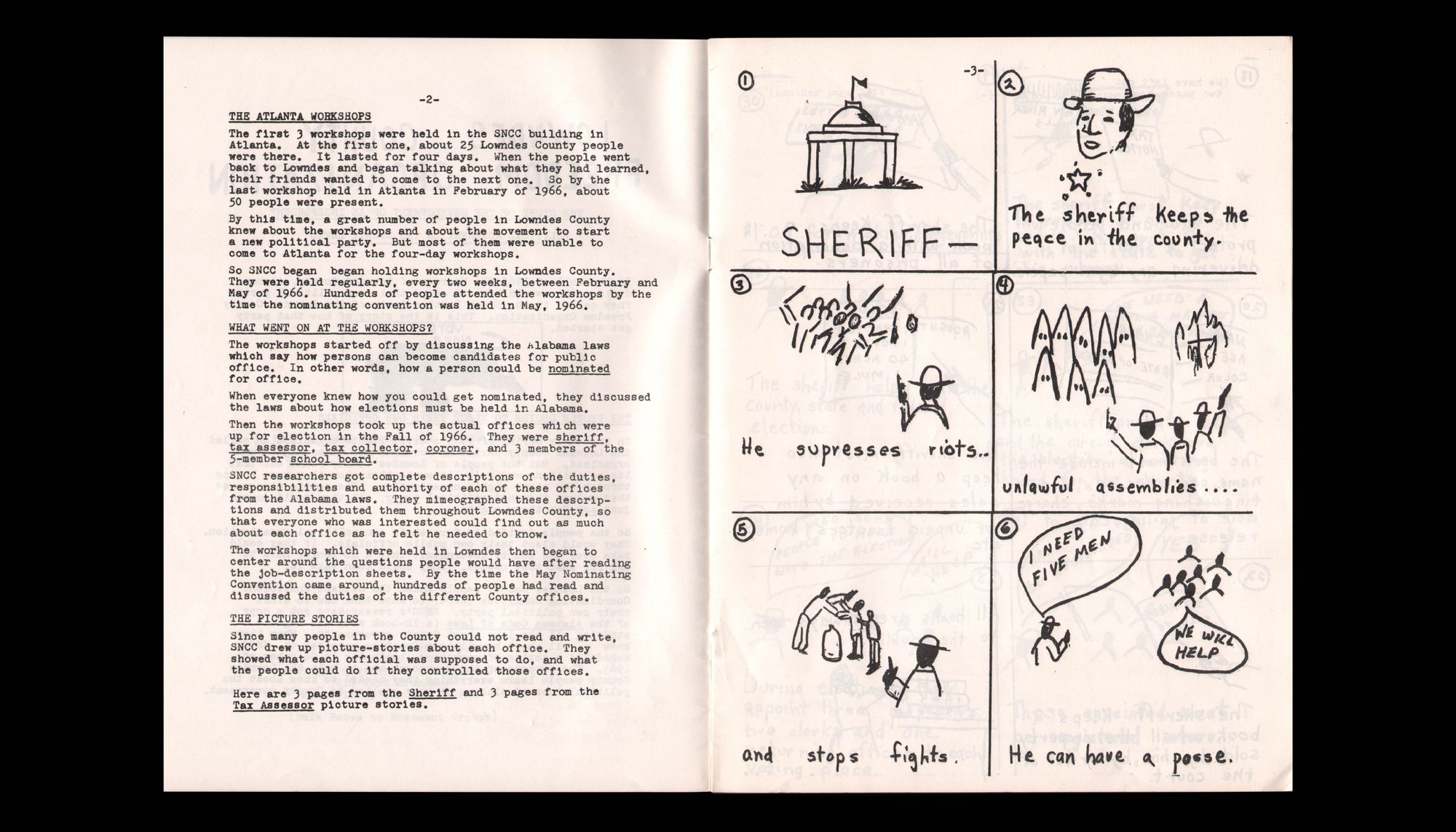
By the time the logo made its way to Northern California to represent the Black Panther Party and no longer just the Lowndes County Freedom Organization, there had been several iterations of the logo on other ephemera like buttons and posters, with small nuances like differences in shading. In Tellefson’s Black Panther Party pin collection alone, there are four different versions of the panther. Fortunately, once the panther was cemented as the party’s definitive logo (and by proxy, its meaning cemented too), the slight variations didn’t run the risk of changing the message.
“Symbols play a large role in branding movements; whether a logo grants greater accessibility or simply adds style to materials and merchandise, what is seen is as important as what is heard and done.”
In 1966, Lisa Lyons, an artist and active member of the Independent Socialist Club (ISC) as a undergraduate student at University of California Berkeley, was hired by the Students for a Democratic Society (SDS) of UC Berkeley to update the logo for the Oakland chapter’s purposes, and continued the tradition of populating various materials and paraphernalia with its silky, black form (more of which can been seen in a Design Observer article on the topic). Zellner remembers the California panther being much more “glamorous” than the “amateurish” Alabama panther; however, the unrefined aesthetic of this panther is precisely what helped SNCC come across as more accessible on the whole. “The reason for having the panther to begin with was that many people were illiterate, and couldn’t read that this was a new independent Black party, but they could see from the logo that it was a new independent Black party in Lowndes County.” Symbols play a large role in branding movements; whether a logo grants greater accessibility or simply adds style to materials and merchandise, what is seen is as important as what is heard and done.
“The black panther, which was the symbol for the Lowndes County Freedom Organization, and which was used for the Lowndes County election back in the 60s, ended up migrating on to San Francisco, the Bay Area, to Oakland,” Lawson says. “And so that was the time that it became the symbol for the Black Panther Party. By the time it became the symbol for the Black Panther Party the people in Lowndes County I don’t think were even using it.”
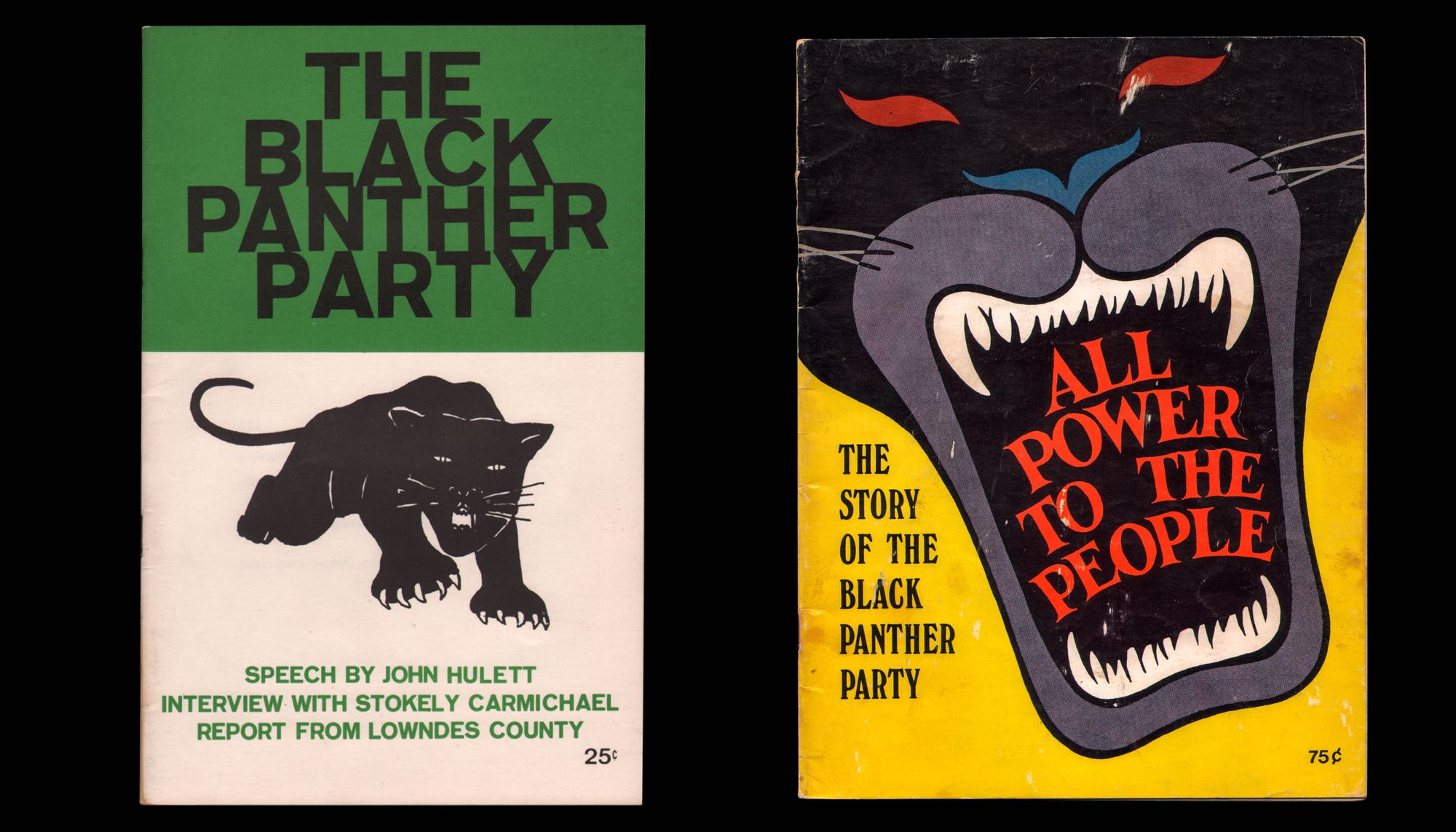
I asked Zellner why she thought the panther was chosen to represent SNCC, and why it was successful at getting the SNCC’s message across. Prior to the creation of the black panther logo we know today, SNCC’s campaign buttons were all adorned with an image of a black hand and a white hand shaking in unity. Though this old logo and the new black panther one coexisted for a short time, ultimately SNCC did away with the multicultural handshake symbol altogether. “First off, the black panther was black, it was not a multiracial thing. It was a panther and had its claws out—it was much more aggressive. And it was uniracial rather than being biracial. So it was a Black presence that was in your face and I’m sure that’s why Stokely chose it.”
Lawson notes that though there were political differences between the SNCC and BPP, the logo “had meaning because of what the people in Lowndes County were giving to it” through their organizing efforts. “Because for the people [in Oakland], it symbolized that these Black people were courageous enough to stand up for themselves, even in the face of, you know, one of the most oppressive and racist areas of the country,” Lawson says.
“The black panther, ever poised to launch but only if attacked, became wildly popular, instantly recognizable in America and everywhere around the world. It symbolized a new Black community, but its secret power is that it was designed by a group of women, who built on each other’s visions with style and imagination.”
The black panther, ever poised to launch but only if attacked, became wildly popular, instantly recognizable in America and everywhere around the world. It symbolized a new Black community, but its secret power is that it was designed by a group of women, who built on each other’s visions with style and imagination. “We were women who, then and now, were making the world for ourselves. We were not waiting for anybody to give us anything,” says Lawson.
Their labor, invisible but appreciated, helped form the messaging that would help birth and grow a revolution. “Women have not been credited but individuals were very seldom credited. And part of that was good,” says Zellner. “The relationship of the individual to the group is different, because the individuals are not in the group to win something for themselves. The pleasure that people took in success was the group’s success.”
Evan Nicole Brown (she/her) is a writer, reporter, and editor from Los Angeles, currently based in Brooklyn. She graduated from Bard College with a joint degree in Literature and Written Arts before working in advertising as a copywriter and book publishing as a junior literary agent.
Since then, she has written for various outlets including Architectural Digest, Atlas Obscura, Bustle, Chicago Magazine, Fast Company, Gothamist, Okay Player, Paper Magazine, and The Creative Independent.
Currently, Evan is a reporting fellow at The New York Times on the politics desk.

